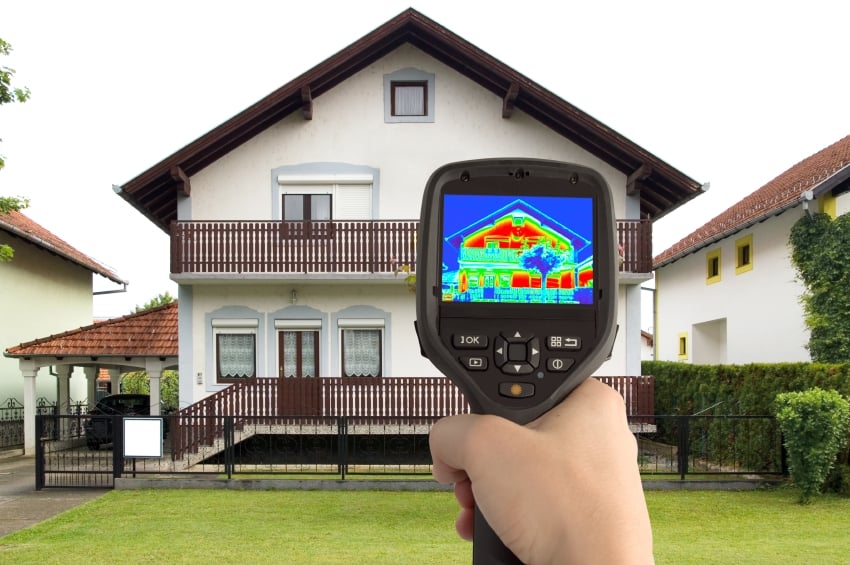Home Inspection Add-On Services You Should Consider

Contents
It pays to be a one-stop shop.
And in a recession, it's a good idea to diversify your business and offer services beyond what's included in a typical home inspection.
While home inspectors should never offer repair services for issues they find (it's a conflict of interest), you can offer routine testing and inspections for common problems around the home. And we have a few ideas for exactly what you can add to take your inspection business to the next level.
Radon Testing
Radon testing is one of the most common add-ons to a home inspection. Like many things in the home inspection world, there are no national mandates or guidelines for radon requirements. Each state has its own laws and requirements for certification. Regardless, radon is a great way to upsell homebuyers looking for a home inspection.
Radon testing isn't super common everywhere, but it's a big deal for homebuyers and if you can offer it, you should. If you have a home inspection business in an area with high radon levels (think the North East), it's especially lucrative to offer radon testing.
What You'll Need
- Radon monitor (cost: anywhere between $120 to $550)
- A certification to test for radon if your state requires it
The Process
Radon testing is a great add-on for inspectors because it's pretty passive work. If you buy continuous radon monitors, you can drop one off at the house when you inspect it and pick it up 48 hours later. An extra trip is worth it, especially because inspectors usually charge over $100 for a radon test add-on.
Thermal Imaging
Offering thermal imaging will take your home inspections up a notch.
Once you have the equipment, thermal imaging is an easy way to catch issues that might not be easy to see with the naked eye, such as moisture, pest infestations, heat and energy, ventilation problems, and structural problems.
And, you can turn your findings into upsells. If you see an area where mold might be present, offer a mold test!
One of the best things about offering thermal imaging? You have the potential to schedule a follow-up re-inspection. Although it would be a conflict of interest to fix any of the issues you might find with thermal imaging, you can check in again and make sure any issue spotted with thermal imaging is fixed.
Inspectors usually charge $150 or more for a thermal imaging add-on, depending on the home size. For a service that should only add about 30-60 minutes to your inspection time, we think that's pretty worth it.
What You'll Need
- Infrared camera (cost: anywhere from $200 up to about $3000)
The Process
The great thing about thermal imaging? Once you have an infrared camera, you can just bring it along to your inspections. Our tip: make sure to include side-by-side images from your infrared camera and your regular camera in your report so home buyers can easily see where the issues are in the house.

Sewer Scope Inspections
Sewer scope inspections are routine testing done to a home's sewer line. By inspecting a sewer line, you can assure the homebuyer that they won't be exposed to health risks associated with sewage exposure and alert them to structural damage to their sewer line.
Inspectors usually charge between $125 and $500 for a sewer scope inspection. By adding sewer scope inspection as a service, you can increase your revenue per inspection and become the homeowners' go-to source for routine inspections.
What You'll Need
- Sewer camera equipment (cost: $400+)
The Process
A sewer scope inspection should only take 30 minutes to an hour. You'll bring your camera equipment to the home inspection and examine the home's pipes for structural damage, bacteria, and any other health risks.
Water Quality Tests
While public sources of water are tested frequently, homeowners want to make sure their drinking water supply is safe. By offering water testing, you can offer a homebuyer peace of mind in their big purchase and get paid more.
Inspectors usually charge between $100 and $300 for water quality add-ons, so it's a great way to get a bit more for your time spent on-site during an inspection.
It's common to test water for:
- Naturally occurring chemicals and minerals
- Sewage release
- TDS (total dissolved solids, such as heavy metals or salt)
- Hardness and pH
- Copper
- Lead
The EPA recommends that the water supply is tested annually, so you can turn water testing into recurrent income year after year.
What You'll Need
- Water test kits (preferably EPA-approved)
The Process
The process for a water quality test will vary based on whether you use a home test kit (which can be purchased at a local hardware store or online) or a kit provided by a state laboratory.
There are pros and cons to both methods: home test kits are easier to come by and allow inspectors to remain independent from state laboratories. However, not all test kits are EPA approved and can yield less accurate results.
Some states regulate who can get paid to test for water quality, so make sure you check your state laws before offering water quality tests.
Mold Inspection
Mold testing is an excellent add-on for your home inspection services. While some states require a licensing process to test for mold, others don't. Either way, mold testing is a lucrative skill to add to your toolkit.
The average Spectora user's mold add-on is $243. While you might not add a mold inspection to every home inspection you do, $200 to $300 is definitely not nothing.
Want to know more about how to get into mold inspections? Check out the video below.
What You'll Need
- Mold testing kits
- A certification to test for mold if your state requires it
The Process
This one's pretty simple: often, home inspectors will know what areas of a home are prone to mold and will be able to check during the course of a routine residential inspection. Tools like a mold testing kit or a thermal imaging camera will allow you to definitively identify mold.
Pest Inspection
If there's one thing a homeowner doesn't want, it's pests. The good news? You can be their go-to business for pest inspection. Pest inspection is usually necessary for older homes, or houses in areas where wood destroying organisms are common.
To become a pest inspector, check out the National Pest Management Association's (NPMA) guidelines for pest inspection. Important note: if you plan on adding WDO inspections, you'll need to use the NPMA-33 form.
What You'll Need
- A pest control license if your state requires it
- Complete a pest or termite training course
The Process
Once you're trained, the process for a pest inspection is relatively simple. You'll need to determine whether or not there is visible evidence of pests in the home and write a report with recommendations for the homeowner's treatment for any evidence of pests found.
Again, thermal imaging can be super useful to help you identify the presence of pests in a house.